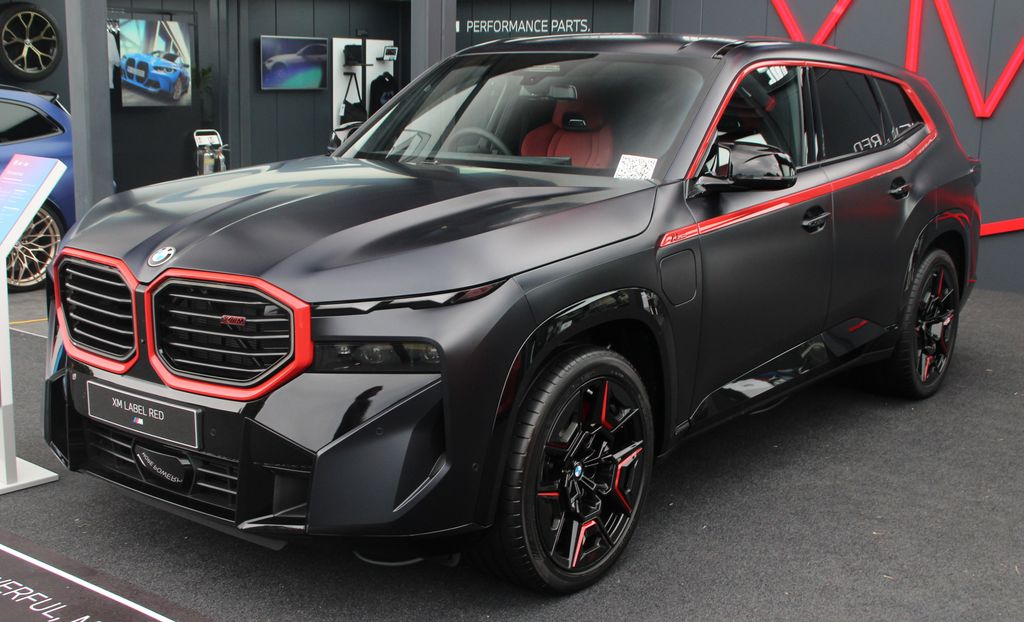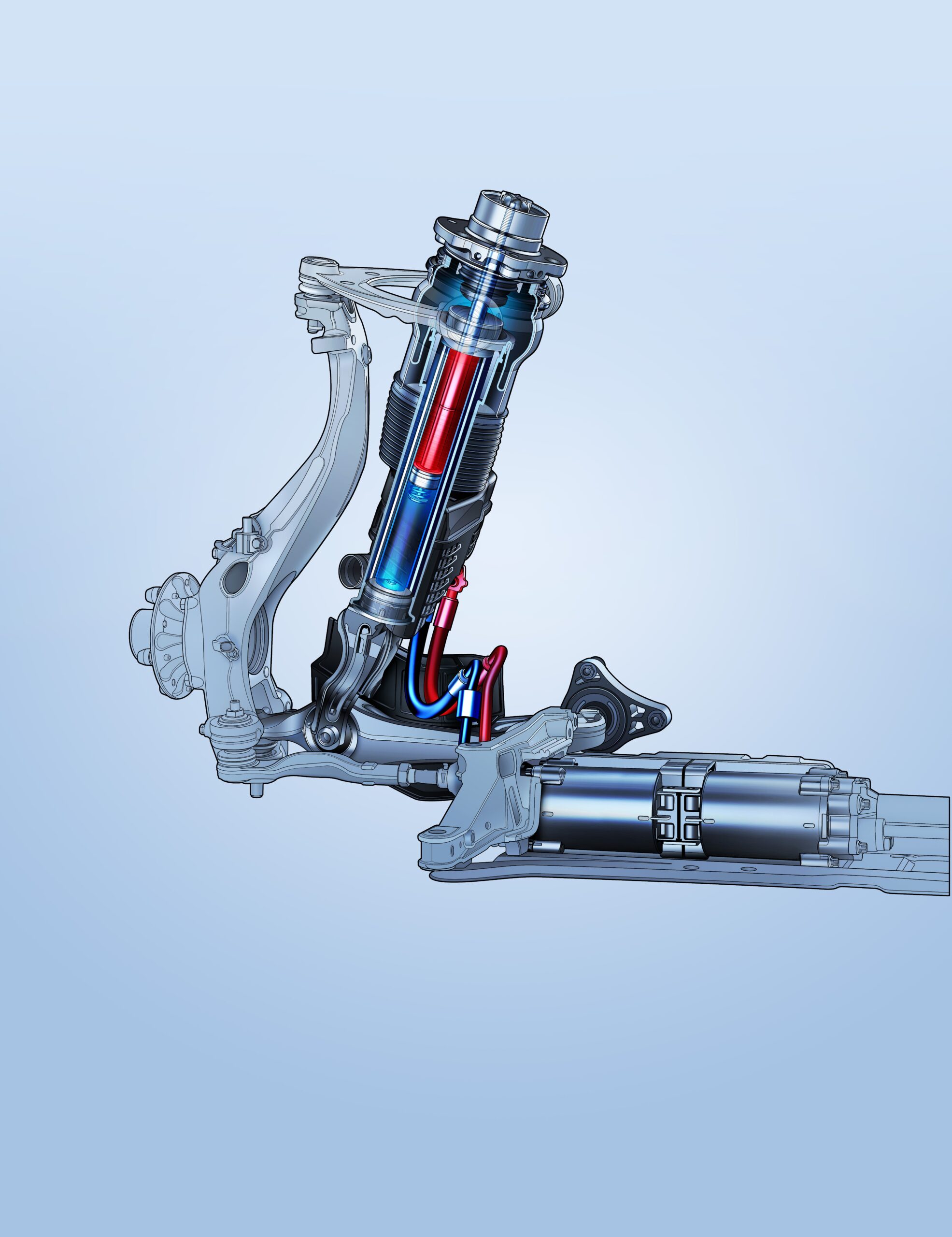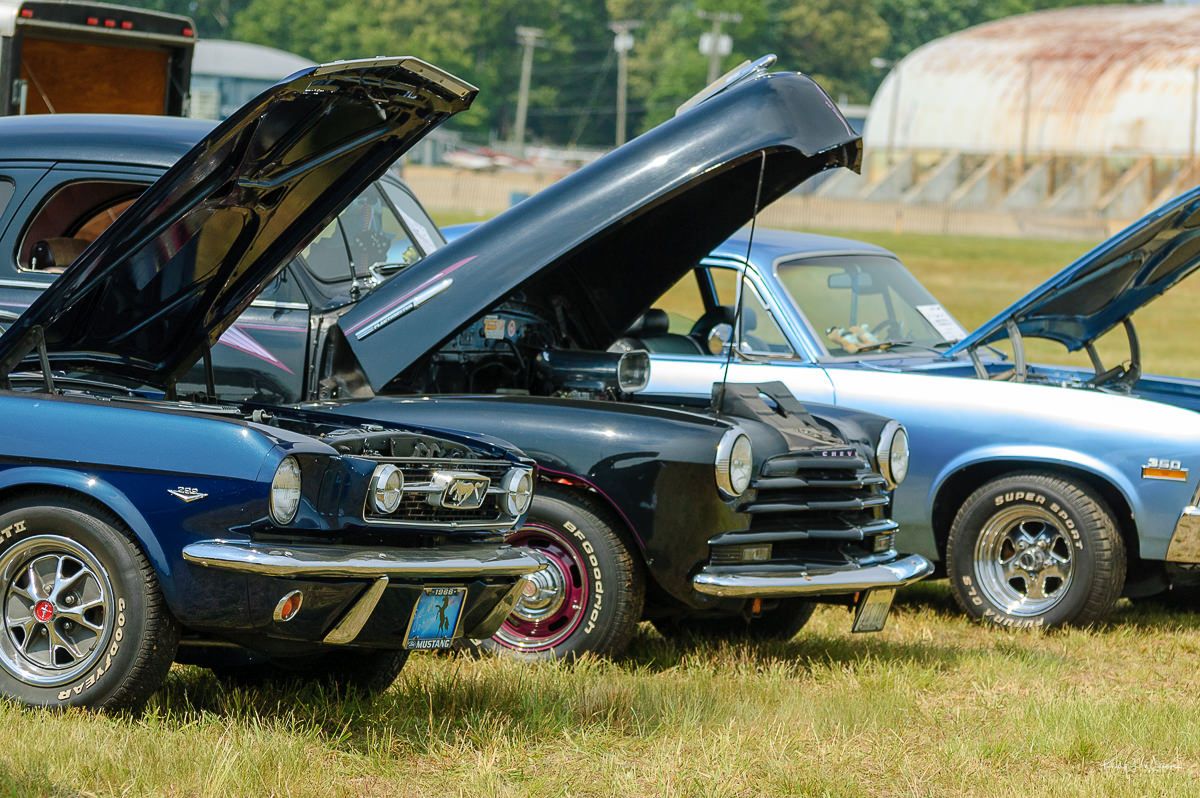
When you think of American muscle cars, a vivid tapestry of imagery likely comes to mind: the iconic rumble of a V8 engine, the scent of burning rubber on asphalt, and the sheer thrill of raw, untamed power. For generations, vehicles like the Ford Mustang, Chevrolet Camaro, and Dodge Challenger have not just been cars; they have been symbols of freedom, rebellion, and a unique slice of automotive Americana. They have defined performance motoring, leaving an indelible mark on our culture. But hold onto your seats, because a seismic shift is underway, one that promises to reinvent these beloved legends in ways we have never quite imagined.
Indeed, the automotive world is accelerating at an unprecedented pace towards an electric future, and far from signaling the demise of these high-horsepower icons, this electric revolution is actually ushering in a new golden age of tire-smoking power. It is a fascinating transformation, proving that the heart of a muscle car—its ability to thrill and dominate the road—can beat just as fiercely, if not more so, with a different kind of power under the hood. The question is not whether muscle cars will survive; it is how they are being brilliantly reimagined to thrill a new generation of enthusiasts.
From groundbreaking student projects to bold moves by Detroit’s biggest names, the journey from traditional gasoline-powered beasts to cutting-edge electric titans is filled with incredible ingenuity and a deep commitment to innovation. We are about to take a closer look at some of the most exciting developments that are proving the muscle car’s future is not just electric—it is electrifying. These trailblazers are showing us that speed, power, and an undeniable cool factor can absolutely go hand in hand with sustainability and advanced technology.

1. **MINDDRIVE’s Student-Built 1969 Chevrolet Chevelle SS EV: A Hands-On Transformation** Imagine combining the raw allure of a classic 1969 Chevrolet Chevelle SS with the silent, potent force of an electric powertrain. That is precisely what over 80 male and female students from MINDDRIVE, working out of Operation Breakthrough’s Ignition Lab, achieved with their truly unique project: the conversion of this iconic muscle car into an electric vehicle (EV). This was not just any conversion; it stands proudly as the world’s first student-built electric muscle car, a testament to what passion, mentorship, and hands-on learning can accomplish in the automotive world.
With expert guidance from MINDDRIVE instructors, these dedicated students immersed themselves in hands-on technical skills, meticulously adapting a Tesla Model S drivetrain to fit the ’69 Chevelle. This required an immense amount of custom fabrication and intricate suspension work, alongside significant modifications to the vehicle’s frame. They embarked on a complete frame-off restoration, replacing a remarkable 60% of the rusted metal and even building a custom frame table to straighten the bent chassis near the front passenger side before the complex fabrication could even begin. This meticulous process not only rebuilt a classic but also provided invaluable real-world engineering experience.
The project even caught the attention of Kansas City Chiefs star Travis Kelce, who joined the students to help remove body panels, offering them firsthand experience in automotive disassembly while working alongside a true role model. From meticulous sanding for the primer coat to the complex frame modifications involving precise cutting, welding, and reinforcing, every step was a learning opportunity. The installation of the battery packs, the very heart of the electric powertrain, was a pivotal moment, teaching them the intricacies of EV systems and the importance of precision engineering. This Chevelle is a powerful symbol of innovation, education, and sustainability, demonstrating the boundless possibilities when young minds are empowered to build the future.
Car Model Information: 2017 Toyota Camry SE
Name: Chevrolet Chevelle
Caption: 1970 Chevrolet Chevelle SS 396 Sport Coupe
Manufacturer: Chevrolet
Production: 1963–1977
ModelYears: 1964–1977
Class: Mid-size
Platform: GM A platform (RWD)
Layout: FR layout
Successor: Chevrolet Malibu
Categories: 1970s cars, All articles needing additional references, All articles that may contain original research, All articles with specifically marked weasel-worded phrases, All articles with unsourced statements
Summary: The Chevrolet Chevelle is a mid-sized automobile that was produced by the Chevrolet division of General Motors (GM) in three generations for the 1964 to 1977 model years. Part of the GM A-body platform, the Chevelle was one of Chevrolet’s most successful nameplates. Body styles included coupes, sedans, convertibles, and station wagons. The “Super Sport” versions were produced through the 1973 model year and Lagunas from 1973 through to 1976.
After a four-year absence, the El Camino was reintroduced as part of the new Chevelle lineup in 1964.
From 1964 to 1969, GM of Canada sold a modified version of the Chevelle that included a Pontiac-style grille, and a LeMans instrument panel, marketed as the Beaumont.
The Malibu was the top-of-the-line model to 1972, and completely replaced the Chevelle nameplate starting with the redesigned, and downsized 1978 model year.
Get more information about: Chevrolet Chevelle
Buying a high-performing used car >>>
Brand: Chevrolet Model: Chevelle SS
Price: $15,995 Mileage: 41,772 mi.
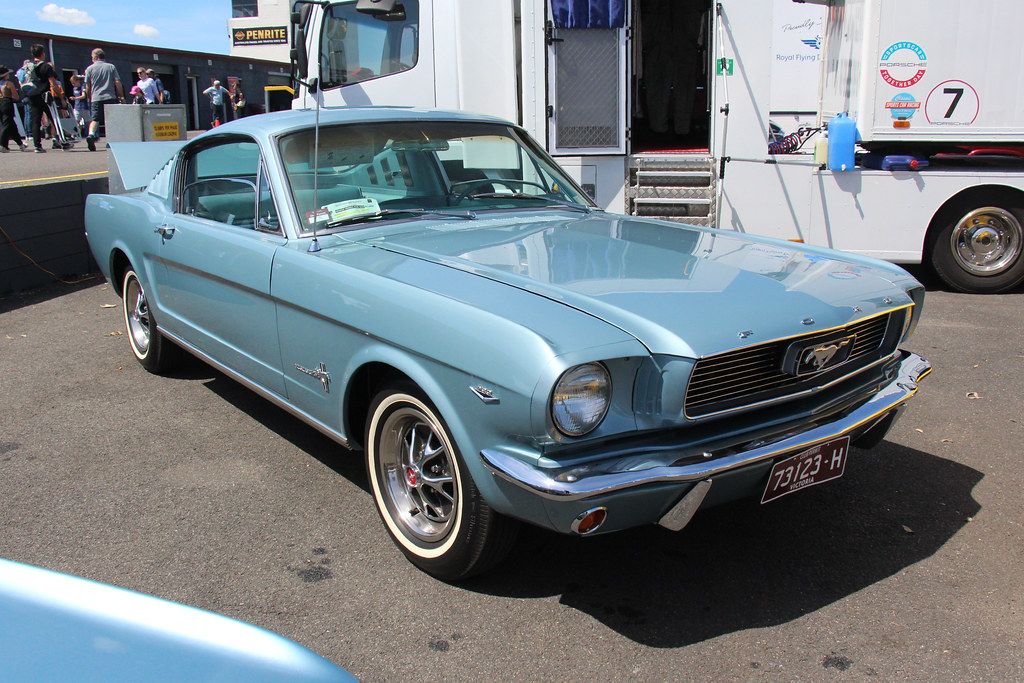
2. **John Wilson’s Sustainable 1966 Ford Mustang EV: A Veteran’s Vision** For many, a 1966 Ford Mustang evokes the distinct roar of an inline-six engine, a defining sound of American automotive history. However, for John Wilson, a Navy veteran and ardent EV enthusiast from Fayetteville, Arkansas, the vision for this iconic car was entirely different: quiet power, clean energy, and an innovative new chapter. His groundbreaking EV customization resulted in a silver-blue Mustang that earned the prestigious Best Interior award at the Electrify Showoff in Denver, demonstrating his remarkable success as a first-time EV converter.
John’s journey is a compelling blend of past and future. After four decades of successfully running Presidential Conversions Inc., a mobility business specializing in wheelchair-accessible vehicles, he embraced a new challenge: electric vehicle conversion. He explicitly purchased the 1966 Ford Mustang Coupe on April 16, 2021, with the sole purpose of undergoing an EV conversion, stating, “We wanted to experience the EV conversion steps to better understand the process as it relates to the industry.” This deeply personal endeavor also served to promote his new company, Fuel2Electric, which is dedicated to assisting others in their own EV conversion journeys.
At the technical core, this custom build features an EV drivetrain that John proudly regards as his favorite aspect. Powered by dual AC Netgain Hyper 9 HV Inline motors paired with Hyper-Drive X144 controllers, it delivers an impressive 240 horsepower and 324 lb-ft of torque—a substantial leap from the original I6 engine’s 120 horsepower and 190 lb-ft. The Mustang is now equipped with a 52 kWh battery pack comprising 10 Tesla Model S 5.2 kWh modules, custom-housed to provide an estimated range of 150 miles on a single charge. What is more, John’s commitment to sustainability shines through, with approximately 80% of the build utilizing repurposed materials, demonstrating how classic cars can be beautifully revived and contribute to a greener future.
Car Model Information: 1966 Ford Mustang Base
Name: Ford Mustang
Caption: 2018 Ford Mustang GT 5.0
Aka: Ford T5 (Germany)
Manufacturer: Ford Motor Company
Production: March 1964 – present
ModelYears: 1965–present
Class: Unbulleted list
BodyStyle: Unbulleted list
Layout: Front-engine, rear-wheel-drive layout
Categories: 1970s cars, 1980s cars, 1990s cars, 2+2 coupés, 2000s cars
Summary: The Ford Mustang is a series of American automobiles manufactured by Ford. In continuous production since 1964, the Mustang is currently the longest-produced Ford car nameplate. Currently in its seventh generation, it is the fifth-best selling Ford car nameplate. The namesake of the “pony car” automobile segment, the Mustang was developed as a highly styled line of sporty coupes and convertibles derived from existing model lines, initially distinguished by “long hood, short deck” proportions.
Originally predicted to sell 100,000 vehicles yearly, the 1965 Mustang became the most successful vehicle launch since the 1927 Model A. Introduced on April 17, 1964 (16 days after the Plymouth Barracuda), over 400,000 units were sold in its first year; the one-millionth Mustang was sold within two years of its launch. In August 2018, Ford produced the 10-millionth Mustang; matching the first 1965 Mustang, the vehicle was a 2019 Wimbledon White convertible with a V8 engine.
The success of the Mustang launch led to multiple competitors from other American manufacturers, including the Chevrolet Camaro and Pontiac Firebird (1967), AMC Javelin (1968), and Dodge Challenger (1970). It also competed with the Plymouth Barracuda, which was launched around the same time. The Mustang also had an effect on designs of coupes worldwide, leading to the marketing of the Toyota Celica and Ford Capri in the United States (the latter, by Lincoln-Mercury). The Mercury Cougar was launched in 1967 as a unique-bodied higher-trim alternative to the Mustang; during the 1970s, it included more features and was marketed as a personal luxury car.
From 1965 until 2004, the Mustang shared chassis commonality with other Ford model lines, staying rear-wheel-drive throughout its production. From 1965 to 1973, the Mustang was derived from the 1960 Ford Falcon compact. From 1974 until 1978, the Mustang (denoted Mustang II) was a longer-wheelbase version of the Ford Pinto. From 1979 until 2004, the Mustang shared its Fox platform chassis with 14 other Ford vehicles (becoming the final one to use the Fox architecture). Since 2005, Ford has produced two generations of the Mustang, each using a distinct platform unique to the model line.
Through its production, multiple nameplates have been associated with the Ford Mustang series, including GT, Mach 1, Boss 302/429, Cobra (separate from Shelby Cobra), and Bullitt, along with “5.0” fender badging (denoting 4.9 L OHV or 5.0 L DOHC V8 engines).
Get more information about: Ford Mustang
Buying a high-performing used car >>>
Brand: Ford Model: Mustang
Price: $32,991 Mileage: 98,810 mi.
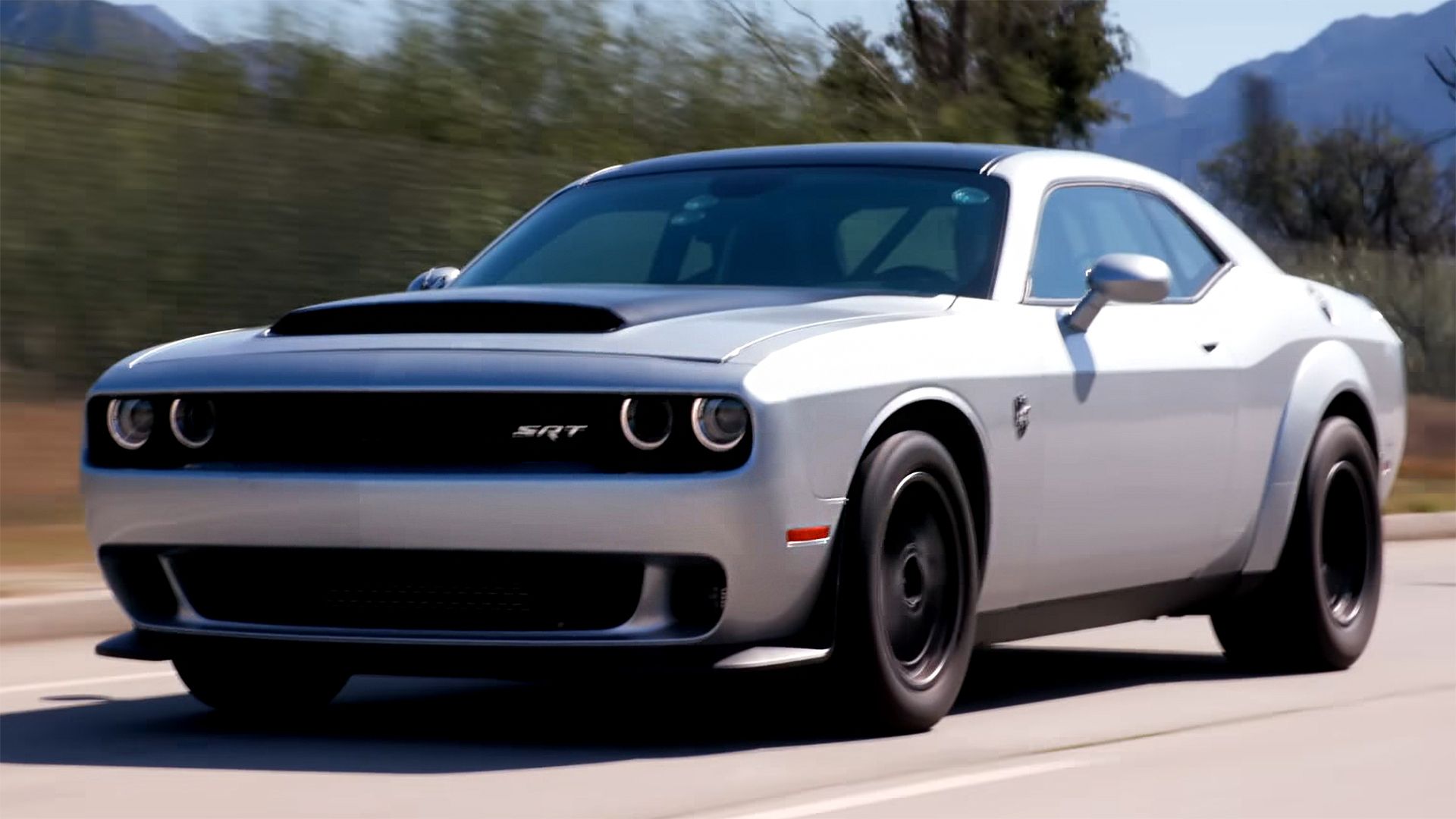
3. **The Dodge Charger Daytona SRT: Redefining Factory Muscle for the Electric Age** The Dodge Charger Daytona SRT stands as a powerful declaration of intent, signaling a bold new direction for one of America’s most revered muscle car brands. This is not merely an adaptation; it is a revolutionary reinterpretation, designed to deliver the raw power and aggressive stance that fans have come to expect, but now with a groundbreaking electric powertrain. Dodge is proving that the essence of muscle can not only survive but also thrive in the electric era, pushing the very limits of performance and technology.
This electric muscle car boasts an incredible estimated 850 horsepower, a significant leap even from the formidable 797 hp of the current ICE Charger SRT Hellcat. Thanks to its 800V electrical architecture, the Charger Daytona SRT can achieve sub-2.5-second 0-60 mph times, harnessing the immediate, unbridled torque that electric motors inherently provide. This translates into astonishingly quick and smooth acceleration, redefining what “fast” means for a muscle car in the 21st century. The design meticulously retains the iconic muscle car silhouette, featuring the traditional long hood and an aggressive stance, seamlessly blended with modern aerodynamic elements for enhanced performance and efficiency.
Perhaps one of the most innovative and, to be frank, thrilling aspects of the Charger Daytona SRT is Dodge’s pioneering approach to sound. Recognizing that the roar of a V8 is central to the muscle car experience, they developed the industry-first Fratzonic Chambered Exhaust system. This ingenious technology produces a staggering 126-decibel sound, masterfully mimicking the characteristic growl of a Hemi V8 through an amplifier and a specially tuned chamber. It features multiple sound profiles and speed-dependent variations, ensuring that the visceral, emotional connection to the car remains intensely alive, even without a traditional combustion engine. This innovation truly ensures that the muscle car soul is preserved, just in a dynamically new way.
Car Model Information: 2017 Toyota Camry SE
Name: Dodge Charger
Caption: 2024 Dodge Charger Daytona R/T
Manufacturer: Dodge
Production: 2024–present
ModelYears: 2024–present
Assembly: Windsor, Ontario
Designer: Ralph Gilles
Class: Full-size car
BodyStyle: liftback
Layout: ubl
Platform: STLA Large
Engine: ubl
Transmission: ubl
Motor: ubl
Range: ubl
Battery: Lithium nickel manganese cobalt oxides
Wheelbase: cvt
Length: cvt
Width: cvt
Height: cvt
Weight: cvt
Predecessor: ubl
Categories: All-wheel-drive vehicles, All stub articles, Articles with short description, Cars introduced in 2024, Coupés
Summary: The eighth-generation Dodge Charger is a full-size car manufactured and marketed by Stellantis North America under the Dodge marque. It was introduced as a production model in March 2024, following appearances of nearly identical concept cars in 2022. It is the first Dodge vehicle to be available with a battery electric powertrain, marketed as the Charger Daytona. A gasoline-powered version called the Charger Sixpack will be available in late 2025, equipped with the 3.0-liter inline-six Hurricane engine.
The eighth-generation Charger is available in three-door and five-door body styles, with the former acting as a replacement to the third-generation Challenger.
Get more information about: Dodge Charger (2024)
Buying a high-performing used car >>>
Brand: DODGE Model: Charger Daytona SRT
Price: $15,995 Mileage: 41,772 mi.

4. **The Ford Mustang Mach-E: An Iconic Nameplate’s Electric Crossover Evolution** Ford’s entry into the electric muscle car conversation, the Mustang Mach-E, represents a bold and strategic move to blend an iconic nameplate with cutting-edge sustainable technology. While its SUV form factor might initially surprise some purists, the Mach-E unquestionably carries the spirit of performance and innovation that the Mustang name embodies. It is a clear demonstration that the future of automotive excitement is diverse and can encompass a wider range of body styles, all while delivering thrilling performance with zero emissions.
The Mach-E GT Performance Edition, a standout in its class, perfectly illustrates this blend of power and efficiency. It delivers a robust 480 horsepower and an impressive 634 lb-ft of torque, enabling it to launch from 0-60 mph in a blistering 3.5 seconds. This acceleration is genuinely competitive with, and in some cases surpasses, that of its V8-powered counterparts, making a strong case for electric power’s inherent performance advantages. It is not merely about straight-line speed; the Mach-E GT also boasts remarkable handling capabilities, pulling an impressive 1.02 g on the skidpad. This figure was once almost unthinkable for a vehicle bearing the Mustang name, showcasing how a lower center of gravity from floor-mounted battery packs revolutionizes handling dynamics.
Ford has thoughtfully designed the Mach-E to appeal to a new generation of car enthusiasts who prioritize both exhilarating performance and environmental responsibility. It is a testament to how established automotive brands are reinterpreting their most cherished legacies for a rapidly evolving market. By offering a powerful, engaging, and environmentally conscious vehicle under the Mustang umbrella, Ford is not only embracing the electric future but also actively shaping it, demonstrating that sustainable technology can absolutely coexist with the adrenaline-pumping thrills that define the muscle car spirit.
Car Model Information: 2017 Toyota Camry SE
Name: Ford Mustang Mach-E
Manufacturer: Ford Motor Company
Production: 2021–present
ModelYears: 2021–present
Assembly: Unbulleted list
Designer: Unbulleted list
Class: Compact crossover SUV
BodyStyle: coupe SUV
Layout: Unbulleted list
Platform: Ford Global Electrified 1 platform
Motor: Synchronous motor#Permanent-magnet
Wheelbase: Convert
Length: Convert
Width: Convert
Height: Convert
Weight: Convert
ElectricRange: Convert
Battery: 68–98 kWh
Charging: unbulleted list
Powerout: Convert
Sp: us
ModelCode: CX727
Categories: 2020s cars, All-wheel-drive vehicles, All Wikipedia articles written in American English, All articles needing additional references, Articles needing additional references from January 2023
Summary: The Ford Mustang Mach-E is a battery electric compact crossover SUV produced by Ford. Introduced on November 17, 2019, it went on sale in December 2020 as a 2021 model. The Mach-E is part of the Mustang series, with its name inspired by the Mach 1 variant of the first-generation Mustang. The car won the 2021 North American SUV of the Year Award.
Get more information about: Ford Mustang Mach-E
Buying a high-performing used car >>>
Brand: Ford Model: Mustang Mach-E
Price: $15,995 Mileage: 41,772 mi.
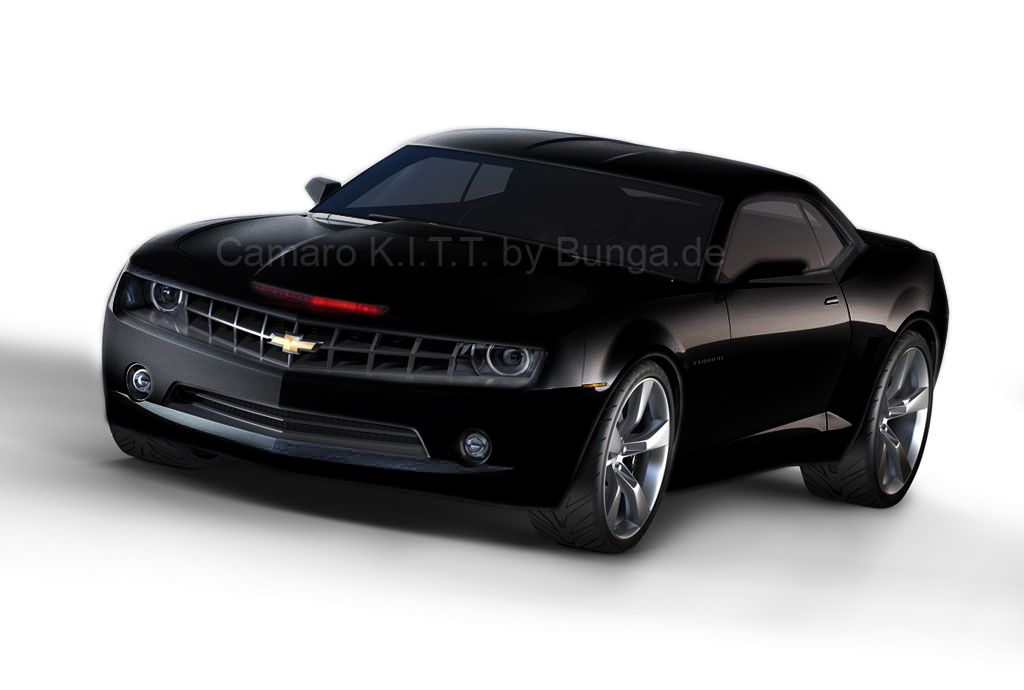
5. **The Anticipated Electric Chevrolet Camaro: GM’s Vision for Future Muscle** As the automotive industry’s electrification trend gains unstoppable momentum, it is thrilling to observe that the iconic American muscle car lineage will continue to thrive, not merely with conversions and new electric models from Dodge and Ford, but also with Chevrolet’s commitment. The anticipated electric Chevrolet Camaro is a clear indication that General Motors is not merely adapting to the electric wave but is actively designing its next generation of performance vehicles to thrill enthusiasts with silent, yet incredibly potent, power. This move solidifies the notion that the electric muscle car is here to stay and will constitute a core part of America’s automotive future.
While specific details about the electric Camaro’s performance figures and design remain largely undisclosed, the mere prospect of an electrified version of such a revered icon generates immense excitement. It promises to deliver the same raw power, aggressive styling, and exhilarating driving experience that fans have cherished for generations, but reimagined for a world that demands sustainability and cutting-edge technology. This strategic move by Chevrolet aligns perfectly with the broader industry shift towards zero-emission vehicles, ensuring that the Camaro’s legacy evolves in tandem with global environmental mandates and changing consumer preferences.
This future electric Camaro will undoubtedly benefit from GM’s extensive research and development in electric powertrains, battery technology, and advanced vehicle platforms. We can anticipate it leveraging the inherent advantages of electric motors, such as instant torque delivery for blistering acceleration and a potentially lower center of gravity for superior handling. The challenge, and indeed the exciting opportunity, for Chevrolet will be to preserve the distinctive ‘soul’ and character of the Camaro—its visual presence, its driving feel, and yes, even its auditory signature—while fully embracing electric propulsion. Its arrival will mark another significant milestone in the remarkable, yet undeniably thrilling, transformation of America’s most iconic cars from roaring gasoline-powered legends to powerful, silent, and sustainable electric giants.
The shift from roaring gasoline engines to silent, powerful electric motors is nothing less than a revolution in the automotive world, especially for America’s iconic muscle cars. As we have witnessed with groundbreaking projects and visionary automaker initiatives, the muscle car is not merely surviving but thriving in this electric future. Now, it is time to delve deeper and truly analyze the engineering marvels, the design innovations, and the powerful market forces that are propelling this electric transformation, demonstrating how performance, aesthetics, and economic realities are converging to redefine an American legend.
Car Model Information: 2018 Chevrolet Camaro 1LS
Name: Chevrolet Camaro
Manufacturer: Chevrolet
Production: 1966–2002,2009–2023
ModelYears: 1967–2002,2010–2024
Class: Pony car
BodyStyle: coupe,convertible
Platform: GM F platform,GM Zeta platform,GM Alpha platform
Layout: Front-engine, rear-wheel-drive layout
Categories: 1970s cars, 1980s cars, 1990s cars, 2+2 coupés, 2000s cars
Summary: The Chevrolet Camaro is a mid-size American automobile manufactured by Chevrolet, classified as a pony car. It first went on sale on September 29, 1966, for the 1967 model year and was designed to compete with the Ford Mustang. The Camaro shared its platform and major components with the Firebird, produced by General Motors’ Pontiac division that was also introduced for the 1967 model year.
Four distinct generations of the Camaro were developed before production ended in 2002. The nameplate was revived on a concept car that evolved into the fifth-generation Camaro; production started on March 16, 2009.
Production of the sixth generation of the Camaro ended in December 2023, for the 2024 model year.
Get more information about: Chevrolet Camaro
Buying a high-performing used car >>>
Brand: Chevrolet Model: Camaro
Price: $19,125 Mileage: 69,196 mi.

6. **Performance Unleashed: Instant Torque and Handling Revolution** The heart of a muscle car has always been its ability to deliver breathtaking power and acceleration, and electric powertrains are not merely meeting but surpassing these expectations. Unlike internal combustion engines, which require time to build revs and torque, electric motors provide maximum torque instantly at zero rpm. This inherent characteristic translates directly into astonishing 0-60 mph times, often surpassing what was attainable with traditional V8s. For example, the forthcoming electric Dodge Charger Daytona SRT is estimated to achieve sub-2.5-second 0-60 mph times, leveraging its 800V electrical architecture and delivering an estimated 850 horsepower—a significant leap from the 797 hp of the current ICE Charger SRT Hellcat.
This immediate power delivery is complemented by a revolution in handling dynamics. The strategic placement of battery packs, typically mounted low in the vehicle’s floor, dramatically lowers the center of gravity. This design choice fundamentally alters the vehicle’s balance, leading to superior stability and cornering capabilities that were once almost inconceivable for traditional muscle cars. The Ford Mustang Mach-E GT Performance Edition, for instance, not only generates a robust 480 horsepower and 634 lb-ft of torque, enabling it to launch from 0-60 mph in a blistering 3.5 seconds, but also pulls an impressive 1.02 g on the skidpad. This figure underscores how electric architecture is not solely about straight-line speed but is also redefining agility and driver control, inscribing a powerful new chapter in muscle car performance.
The numbers speak volumes about this transformation. While a 2023 Dodge Charger SRT Hellcat reaches 60 mph in 3.6 seconds, its electric counterpart aims for 2.5 seconds. Similarly, the 2024 Ford Mustang GT’s 4.1-second 0-60 mph time is surpassed by the Mach-E GT Performance Edition’s 3.5 seconds. The shift to electric power is clearly about exceeding performance benchmarks, proving that the future of muscle cars is not only sustainable but undeniably faster, with battery technology continually evolving to deliver even more impressive figures.
Car Model Information: 2017 Toyota Camry SE
Name: Dodge Charger
Caption: 2024 Dodge Charger Daytona R/T
Manufacturer: Dodge
Production: 2024–present
ModelYears: 2024–present
Assembly: Windsor, Ontario
Designer: Ralph Gilles
Class: Full-size car
BodyStyle: liftback
Layout: ubl
Platform: STLA Large
Engine: ubl
Transmission: ubl
Motor: ubl
Range: ubl
Battery: Lithium nickel manganese cobalt oxides
Wheelbase: cvt
Length: cvt
Width: cvt
Height: cvt
Weight: cvt
Predecessor: ubl
Categories: All-wheel-drive vehicles, All stub articles, Articles with short description, Cars introduced in 2024, Coupés
Summary: The eighth-generation Dodge Charger is a full-size car manufactured and marketed by Stellantis North America under the Dodge marque. It was introduced as a production model in March 2024, following appearances of nearly identical concept cars in 2022. It is the first Dodge vehicle to be available with a battery electric powertrain, marketed as the Charger Daytona. A gasoline-powered version called the Charger Sixpack will be available in late 2025, equipped with the 3.0-liter inline-six Hurricane engine.
The eighth-generation Charger is available in three-door and five-door body styles, with the former acting as a replacement to the third-generation Challenger.
Get more information about: Dodge Charger (2024)
Buying a high-performing used car >>>
Brand: Dodge Model: Charger Daytona SRT
Price: $15,995 Mileage: 41,772 mi.

7. **The New Roar: Sound Engineering in the EV Era** One of the most profound challenges in the electric transformation of muscle cars has been the absence of the characteristic V8 roar, a sound integral to the visceral experience and emotional connection these vehicles offer. Automakers are addressing this challenge head-on with innovative sound engineering solutions, ensuring that the muscle car ethos is preserved, albeit in a dynamically novel way. Dodge has pioneered this effort with its industry-first Fratzonic Chambered Exhaust system for the Charger Daytona SRT. This ingenious technology does not merely synthesize a sound; it generates a staggering 126-decibel output that masterfully replicates the growl of a Hemi V8 through an amplifier and a specially tuned chamber.
This system is not static; it features multiple sound profiles and speed-dependent variations, ensuring that the auditory experience remains vividly alive and responsive to the driving scenario. It is a testament to how manufacturers are acknowledging and reinterpreting the significance of sound in the performance vehicle landscape. Ford’s Mustang Mach-E, while adopting a different approach, also employs synthesized engine notes, providing customizable sound profiles through both interior and exterior speakers, with motion-linked audio response to further engage the driver.
General Motors, too, is developing its future sound architecture with a focus on variable frequency output and heritage-inspired tones, enabling driver-selectable modes and an acoustic enhancement system. These endeavors collectively demonstrate that the future of electric muscle cars will not be silent. Instead, it will feature meticulously engineered soundscapes designed to evoke the same excitement and emotional response that has defined muscle car ownership for generations, ensuring that the visceral connection to the machine remains at the core of the driving experience.
Car Model Information: 2017 Toyota Camry SE
Name: Dodge Charger
Caption: 2024 Dodge Charger Daytona R/T
Manufacturer: Dodge
Production: 2024–present
ModelYears: 2024–present
Assembly: Windsor, Ontario
Designer: Ralph Gilles
Class: Full-size car
BodyStyle: liftback
Layout: ubl
Platform: STLA Large
Engine: ubl
Transmission: ubl
Motor: ubl
Range: ubl
Battery: Lithium nickel manganese cobalt oxides
Wheelbase: cvt
Length: cvt
Width: cvt
Height: cvt
Weight: cvt
Predecessor: ubl
Categories: All-wheel-drive vehicles, All stub articles, Articles with short description, Cars introduced in 2024, Coupés
Summary: The eighth-generation Dodge Charger is a full-size car manufactured and marketed by Stellantis North America under the Dodge marque. It was introduced as a production model in March 2024, following appearances of nearly identical concept cars in 2022. It is the first Dodge vehicle to be available with a battery electric powertrain, marketed as the Charger Daytona. A gasoline-powered version called the Charger Sixpack will be available in late 2025, equipped with the 3.0-liter inline-six Hurricane engine.
The eighth-generation Charger is available in three-door and five-door body styles, with the former acting as a replacement to the third-generation Challenger.
Get more information about: Dodge Charger (2024)
Buying a high-performing used car >>>
Brand: DODGE Model: CHARGER DAYTONA SRT
Price: $15,995 Mileage: 41,772 mi.
Read more about: Unlocking Automotive Immortality: The 15 Most Durable Cars Proven to Conquer a Quarter-Million Miles and Beyond
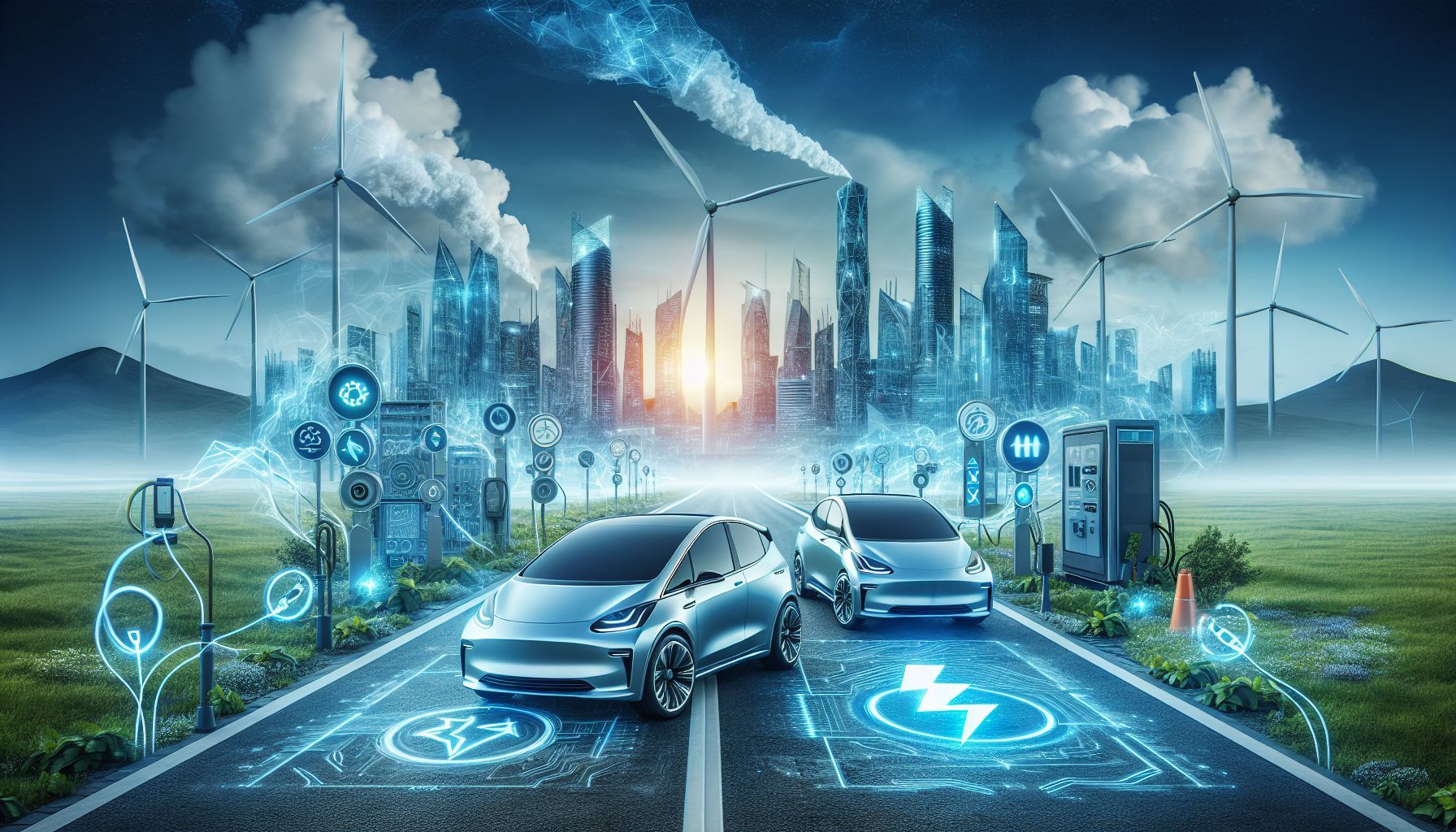
8. **Form Meets Function: Design Evolution of Electric Muscle** The visual identity of American muscle cars—their aggressive stance, long hoods, and commanding presence—is deeply embedded in automotive culture. As these icons transition to electric powertrains, designers are confronted with the exhilarating challenge of evolving their aesthetics while meticulously preserving their unmistakable character. Ralph Gilles, Chief Design Officer at Stellantis, articulates this sentiment perfectly: “With the electric Charger Daytona SRT, we have maintained the iconic muscle car silhouette while integrating modern aerodynamic elements that enhance both performance and efficiency.” The result is a seamless amalgamation of traditional muscle car cues, such as the bold grille and aggressive stance, with subtle, streamlined features essential for EV efficiency.
Beyond the exterior, interior design is also experiencing a considered transformation, merging classic muscle car elements with the requirements of modern electric vehicles. Analog gauges are being superseded by sophisticated, customizable digital displays that offer real-time information, ranging from power output to energy regeneration. Nevertheless, these modern interfaces are judiciously incorporated into driver-centric cockpit layouts that uphold the spirit and ergonomics that muscle car enthusiasts have come to anticipate. Stuart Norris, Interior Design Director at GM, underscores this approach, stating, “We are not attempting to replicate the past—we are reinterpreting it for the future.”
This reinterpretation is manifest in the meticulous attention to detail: machined aluminum switchgear, performance-oriented digital displays, heritage-inspired color schemes, and textured materials that subtly evoke classic muscle car interiors, all converging in driver-centric control layouts. The objective is unequivocal: to sustain the emotional connection and the distinctive American performance car identity while embracing new technologies that enhance the driving experience. This judicious balance ensures that the essence of what renders a muscle car special not only endures but flourishes in the electric era, presenting a captivating vision of automotive design for the future.
Car Model Information: 2017 Toyota Camry SE
Name: Dodge Charger
Caption: 2024 Dodge Charger Daytona R/T
Manufacturer: Dodge
Production: 2024–present
ModelYears: 2024–present
Assembly: Windsor, Ontario
Designer: Ralph Gilles
Class: Full-size car
BodyStyle: liftback
Layout: ubl
Platform: STLA Large
Engine: ubl
Transmission: ubl
Motor: ubl
Range: ubl
Battery: Lithium nickel manganese cobalt oxides
Wheelbase: cvt
Length: cvt
Width: cvt
Height: cvt
Weight: cvt
Predecessor: ubl
Categories: All-wheel-drive vehicles, All stub articles, Articles with short description, Cars introduced in 2024, Coupés
Summary: The eighth-generation Dodge Charger is a full-size car manufactured and marketed by Stellantis North America under the Dodge marque. It was introduced as a production model in March 2024, following appearances of nearly identical concept cars in 2022. It is the first Dodge vehicle to be available with a battery electric powertrain, marketed as the Charger Daytona. A gasoline-powered version called the Charger Sixpack will be available in late 2025, equipped with the 3.0-liter inline-six Hurricane engine.
The eighth-generation Charger is available in three-door and five-door body styles, with the former acting as a replacement to the third-generation Challenger.
Get more information about: Dodge Charger (2024)
Buying a high-performing used car >>>
Brand: Dodge Model: Charger Daytona SRT
Price: $15,995 Mileage: 41,772 mi.

